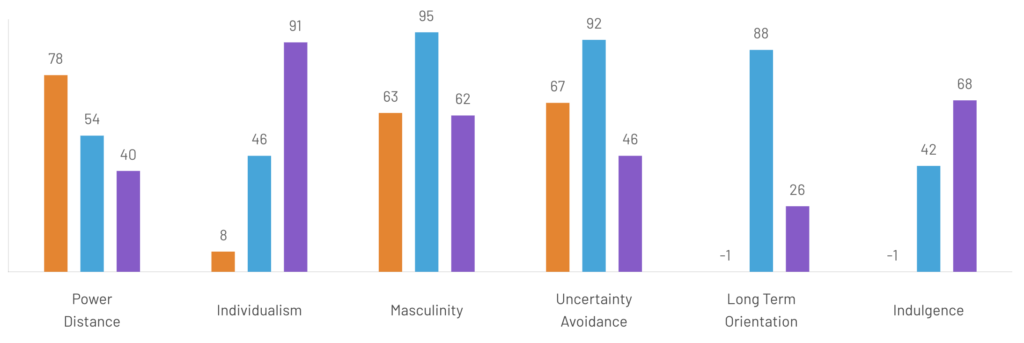
In my French class last week, we had a conversation about stereotypes. This was especially interesting, since there were students in my class from different parts of the US, Japan, Switzerland, and Russia, in addition to my French professor. She first asked us what stereotypes we had about the French, before we moved on to stereotypes we had about each others’ countries. She also asked us about what we expected the stereotypes to be for our countries. Many of the stereotypes that I expected others to have about Americans were stereotypes that they did have. For example, there were the stereotypes that Americans are loud, in the way, overweight, unhealthy, and think we are the best (for the other students, many of these came from television, movies, and the news). However, they also had more positive stereotypes about Americans as well, which surprised me. My professor said that, in her experience from seeing American tourists, Americans always smile and get excited about little things. She used the example of seeing an interesting flower—an American would point it out, get excited, and take a photo, while a French person would look at it, shrug, and move on. Another of her stereotypes was that American students always love “pain au chocolat,” which definitely holds true, as all the Americans in the class agreed.
The Americans in the class brought up the stereotypes that Americans do not try to learn other languages. My professor didn’t fully agree with this stereotype; she seemed to think that most Americans make some effort to speak a little French when they visit. A Swiss girl in my class made a comment that I found very interesting. She said that a stereotype the Swiss have about the French is that the French do not try to learn other languages. In the discussion that followed, I learned that other Europeans view the French as people who do not make an effort to learn languages other than French. Most Americans, myself included, view Europeans as being very multilingual in comparison with Americans, so seeing another perspective of a stereotype Americans usually reserve for Americans being projected towards another group was interesting. The big difference here was being a European versus an American; we had varying stereotypes towards the French.
I also discussed American stereotypes with my host family. Their perspectives were interesting to compare. My host dad and host grandma lived in the US for a long time, though have primarily lived in France. They still have a lot of family in the US. My host mom, on the other hand, has never been to the US. My host dad, having lived in the US, disagreed with the stereotype that Americans are always unhealthy (though he did think Americans eat a lot of “McDo”). After living in the US, he talked about how Americans put a lot of emphasis into working out and eating vegetables, especially compared to the French. My host mom shared the assumption of my class, that Americans were unhealthy. I was surprised that my host dad’s opinion would differ , but it makes sense given he lived in the US for a time, and his opinions were not only formed through watching TV. For my host mom, she viewed the US in the same way that it has historically been viewed—as a land of opportunity. She felt that it is easier in the US to move up in social status and income group, and to lead a better life. My host mom has had a successful life in France, so I found it interesting that she held this view towards the US, especially since many Americans view Europe as better. But through what she had seen in both media, through her husband’s experiences, and with Americans she interacted with, she felt that the US offers more chances for one to better their life.
After learning about the stereotypes people have toward Americans, I found that they do generally align with what Americans expect them to be. The connotation is what differs the most. For example, Americans (myself included) expect Americans to be viewed as very loud and easily excitable. Americans usually view this as a solely negative thing. In my experience, Americans are louder than the French. And this is sometimes seen as annoying, but many French also view Americans as being very friendly. I was shopping with a friend in a small boutique, and the saleslady asked where we were from. When we said the US, her response was very positive, and she commented on how she likes to chat with Americans because Americans are always very friendly and talkative. While some of the negative stereotypes of Americans certainly are true, the French and those from other countries do not view Americans as negatively as most Americans would expect.



